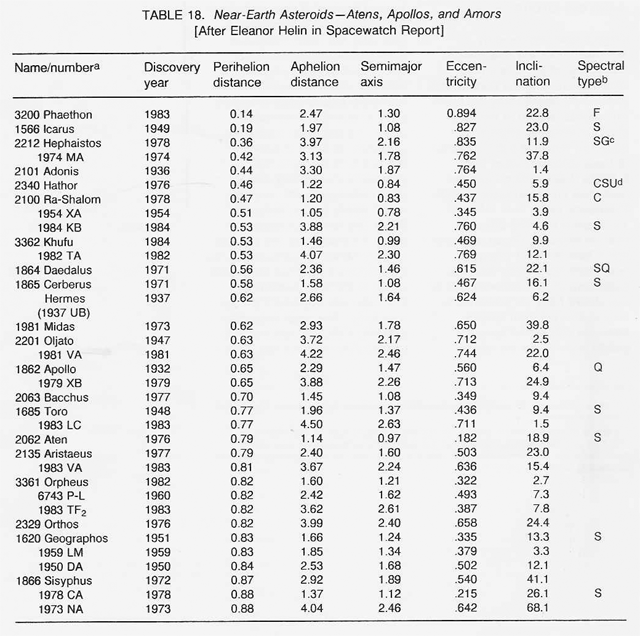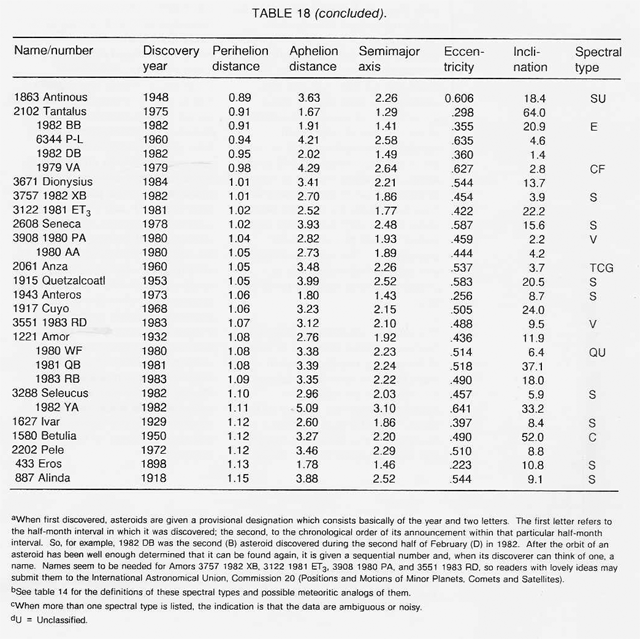
Asteroid Orbits
Eleanor Helin has recently summarized for the Spacewatch" Report the orbital data on the asteroids crossing the Earth's orbit and closely approaching the Earth. An updated version of this list (through 1984)* is given in table 18. The orbital eccentricities of these asteroids range from 0.182 to 0.894, with an average (and most probable) value of 0.55. Inclinations range from a low of 1.4 degrees for 1982 DB up to over 68 degrees. Those asteroids which take the least energy to reach from Earth must have low inclinations (i) and eccentricities (e) and should have semimajor axes not too different from Earth's. Asteroids with orbital periods greater than 1 year are usually easiest to reach if their perihelion distance is near 1 astronomical unit (AU), the mean Earth-Sun distance. A simple but useful approximation rule is that an asteroid will be accessible with a round-trip total change in velocity (delta V) of less than 6 km/sec if 20e + i is less than 14 and the perihelion distance is between 0.8 and 1.15 AU. The first criterion is met by 8 of the 63 known near-Earth asteroids, and 7 satisfy both criteria. Of these, five have round-trip delta V's under 6 km/sec, and two are just over the limit. For comparison, the delta V for ascent from low Earth orbit (LEO) to the lunar surface is 6 km/sec one-way and 9 km/sec round-trip. The most favorable asteroid, 1982 DB, requires less than 4.6!km/sec for a round trip.**


*A further updated list (through 1988) is available in the chapter
by McFadden, Tholen, and Veeder in Asteroids II.
**t it should be noted, however, that we do not have a spectral type for 1982
DB. Two (1982 XB and 1943 Anteros) of the other four asteroids listed in table
19 have been classified (as S). Only one other (3908 1980 PA) of the asteroids
meeting these criteria for accessibility has been classified (as V).
|
Curator: Al Globus If you find any errors on this page contact Al Globus. |
 |
This site was hosted by the NASA Ames Research Center from 1994-2018 and is now hosted by:
